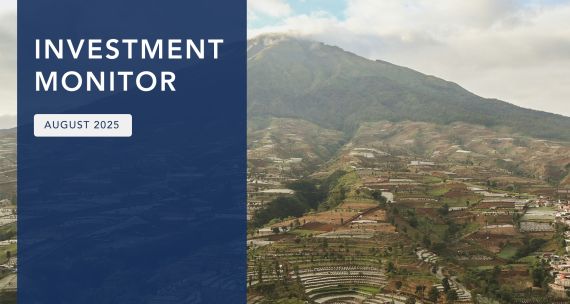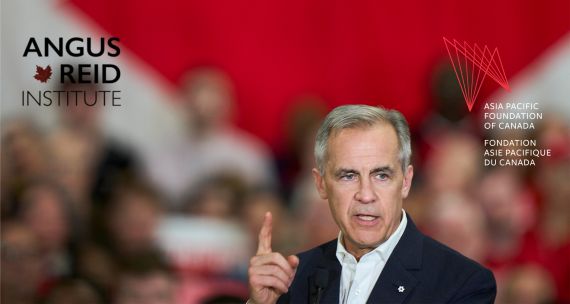As of July 6, more than 11 million people worldwide have contracted COVID-19, and more than 500,000 people have died from the virus, according to John Hopkins University. The Asia Pacific accounts for nearly half (5.2 million) of those cases, and well over one-third (188,000) of those deaths. Experts warn that COVID-19 will pose a threat to our society for an extended period until an effective vaccine or a treatment becomes available. As Canadian companies and governments attempt to mitigate the risk of COVID-19 to their operations, mapping Canadian economic interests and their level of exposure to the pandemic has become critically important. This is particularly true of the Asia Pacific region, which saw a 39 per cent increase in Canadian investments from 2014 to 2018.
Since 2003, 898 Canadian companies have directly invested more than C$222 billion through greenfield ventures or mergers and acquisitions in 477 Asia Pacific locales. Each of these 477 sites represents an economic exposure point to the pandemic as local outbreaks, policy responses, and economic fallout impact the operations of Canadian companies and the success of their investments. To assist government and business leaders, APF Canada has launched the Mapping the Asia Pacific’s COVID-19 Response project, a geographic information system tool that allows users to make timely assessments of Canada’s economic risk exposure to COVID-19 in the Asia Pacific.
APF Canada maps Asia’s response to COVID-19
Since March 2020, the Asia Pacific Foundation of Canada has collected and developed data on COIVD and the Asia Pacific. Hosted on an ArcGIS mapping platform, the project currently includes six unique datasets overlaid with real-time data from John’s Hopkins on COVID morbidity and mortality. The current list of datasets includes: testing policies and practices, domestic and international travel restrictions, school closures, mask-wearing policies, mobile app tracking, and Canadian direct investment at the company level. Combining these datasets, we can begin to uncover the potential impact of national, sub-national, and metropolitan COVID-related policies on Canadian investments in the Asia Pacific.
Visualizing risk: pandemic policies, hot spots, and Canadian economic interests
Taken together, our datasets allow Canadian companies and policy-makers to identify future risks of disruption as a second wave of COVID-19 looms. Below are some examples of how these datasets can be utilized to identify economic risks and opportunities.
Impacts of movement restrictions on investments
One of the most direct impacts on Canadian businesses abroad is the movement restrictions imposed by local authorities. As public health authorities continue to monitor for the potential of a second wave, movement restrictions can sometimes be imposed abruptly where case counts suddenly increase. For instance, in mid-June, as Beijing saw hundreds of new cases related to an outbreak at the Xinfadi wholesale food market, authorities quickly locked down part of the capital to prevent the spread. The lockdown could have significant implications for Canada’s C$568 million in travel and leisure investments in the city as consumers’ movements are restricted.
Impacts of mask-wearing policies on Canadian retail investments
Recent studies show that face masks can significantly reduce the risk of transmission of the coronavirus. In particular, research from the University of Cambridge shows that broad adoption of facemask use can mitigate the risk of a second wave. While facemasks are not a replacement for physical distancing, their use remains an effective and less costly mitigation measure for economies looking to open up. For the retail industry, where customers congregate in crowded indoor spaces, wider adoption of facemasks in an economy could signal a lower risk of a second wave disruption and the rebound of consumer foot traffic. According to a poll conducted in May, 83 per cent of survey respondents in Hong Kong reported wearing facemasks. The wide adoption of facemasks in Hong Kong could well be a positive signal for the C$3.2 billion in Canadian retail investments in the economy.
COVID-19 testing capacity as an indicator of second-wave
A key factor in reducing the spread of COVID-19 so far has been widespread testing. An APF Canada analysis in April showed how South Korea adopted aggressive testing to control the spread of the first wave. As economies are drawing up their post-lockdown strategies, the ability to conduct widespread tests will allow health authorities to detect and suppress local outbreaks as early as possible, mitigating the potential risk of new peaks. For instance, as of July, Singapore has conducted 129,506 tests per million, among the highest in the region. By comparison, Canada has conducted 78,833 tests per million. If the testing capacity continues to rise in the city-state, C$1.5 billion worth of Canadian investments in Singapore’s travel and leisure industry would be less exposed to the disruption of a second wave as the country opens up its borders.
Trying times for Canadian businesses operating in the Asia Pacific
Jurisdictions in the Asia Pacific have different approaches to mitigating the impact of COVID-19. Some impose more stringent travel restrictions, while others only advise citizens to stay home. Depending on the local context, the impact on Canadian companies operating in the region is likely to be different from one jurisdiction to another and from one industry to another. Therefore, Canadian policy makers and business leaders must visualize where Canadian economic interests lie and how exposed those interests are to a potential second wave in the region. APF Canada continues to monitor the Asia Pacific’s policy responses and the changes in Canada’s two-way investment ties with the region. In May, APF Canada released an early assessment of the protectionist measures in the region’s foreign direct investment screening regime. In the coming weeks, we will look further into how the economic impact of COVID-19 will likely slowdown investments between Canada and the Asia Pacific.
With research assistance from Kai Valdez Bettcher, Research Specialist, APF Canada.






